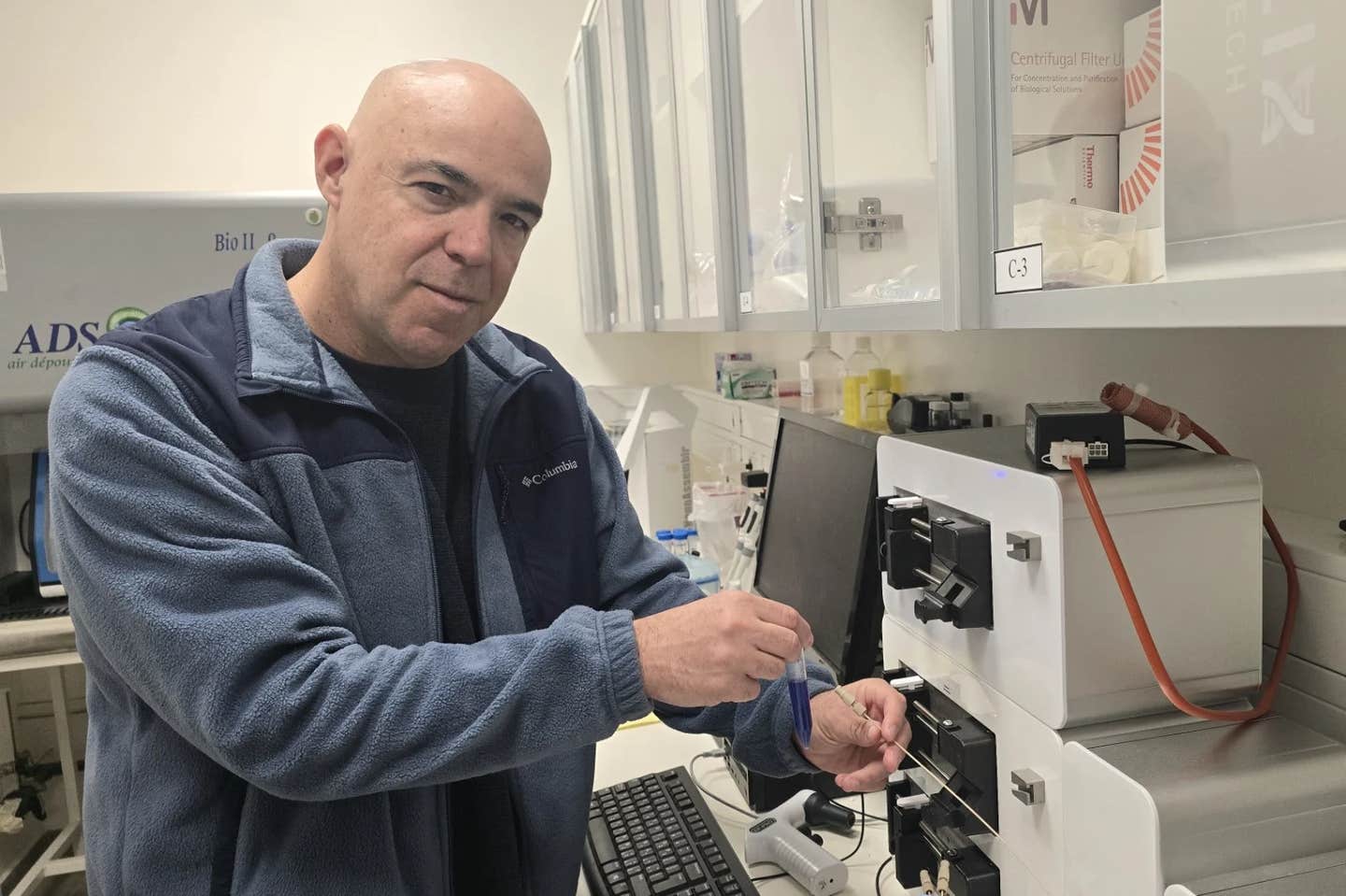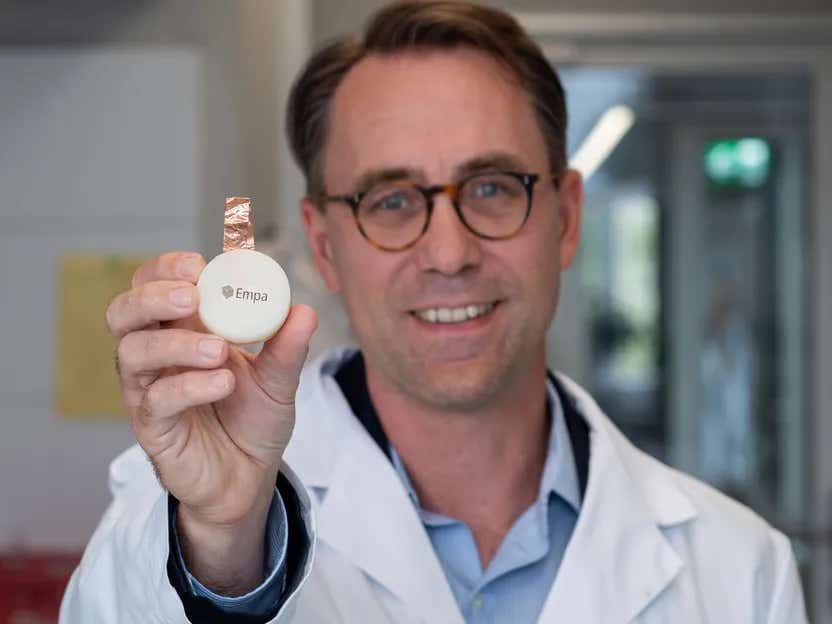CRISPR gene editing breakthrough eliminates 50% of head, neck tumors
CRISPR gene-editing removes SOX2 gene and eliminates 50% of head and neck tumors in mice, offering new hope for targeted cancer therapy.

Prof. Dan Peer at his lab in Tel Aviv University. Using CRISPR to target a single gene, researchers removed 50% of head and neck tumors in mice. (CREDIT: Tel Aviv University)
Head and neck cancers often begin in the mouth, throat, or voice box. They're among the most common cancers in the world, affecting over half a million people each year and causing about 300,000 deaths annually. While treatment options include surgery, radiation, and chemotherapy, many patients still face treatment failure, side effects, and cancer coming back. The survival rate remains low, and researchers are urgently exploring better options.
Why Current Treatments Often Fail
These cancers, medically known as head and neck squamous cell carcinomas (HNSCCs), grow from the mucosal linings of the mouth and throat. Though doctors use a mix of surgery, radiation, and chemotherapy to treat advanced cases, these methods come with major drawbacks. Many patients still relapse, and side effects from treatment can seriously reduce quality of life. The tumors tend to be aggressive and resilient, with cells that multiply quickly and resist destruction.
One big challenge is the tumor’s structure. It has a dense microenvironment, which acts like a shield and makes it harder for drugs to reach the cancer cells. And since these tumors are often visible and easy to touch, doctors believe that injecting treatments directly into them might work better than systemic approaches, which send drugs throughout the whole body. But even direct injections can’t guarantee that only cancer cells will be targeted.
To solve this, scientists are developing a more precise method. It starts with something called lipid nanoparticles (LNPs), which are tiny fat-like particles used to carry RNA. You might have heard of them from mRNA vaccines. Now, researchers are using this same technology to deliver CRISPR—the powerful gene-editing tool—straight into tumor cells.
CRISPR + Nanotechnology = A New Hope
CRISPR is like a pair of molecular scissors that can cut specific genes in DNA. It’s known for being able to permanently alter genes with high precision. But when used for cancer, CRISPR faces unique problems. Cutting the wrong gene or making too many cuts can cause genetic damage or even new cancers. So, scientists must choose their targets very carefully.
One promising target is a gene called SOX2. It helps control the behavior of stem cells and is crucial in early development. In normal adult tissues, SOX2 is mostly quiet. But in many cancers—including head and neck tumors—it’s turned on way too much. This gives cancer cells stem-like powers, helping them grow fast, resist treatment, and avoid dying. That makes SOX2 an ideal target for CRISPR: if you knock it out in cancer cells, they can’t survive.
Related Stories
Researchers at Tel Aviv University decided to test this idea. Led by Dr. Razan Masarwy and Prof. Dan Peer, the team created a CRISPR delivery system that homes in on cancer cells using antibodies. These antibodies stick to a protein called EGFR, which is found in large amounts on many head and neck cancer cells. The CRISPR system, packaged inside LNPs and coated with anti-EGFR antibodies, was injected straight into tumors in animal models.
50% of Tumors Disappeared
The results were nothing short of remarkable. After just three weekly injections of this CRISPR-loaded nanoparticle therapy, half of the tumors completely disappeared within 84 days. “We were happy to observe the domino effect we had predicted,” said Prof. Peer. “Following three injections spaced one week apart, 50% of the cancerous tumors simply disappeared – which did not happen in the control group.”
This isn’t the first time Peer’s team has used CRISPR in cancer research. Back in 2020, they were the first in the world to use CRISPR to cut genes in cancer cells in mice with cell-specific precision. But this is the first time they’ve applied it to head and neck cancers.
CRISPR has not been widely used in cancer treatment until now because scientists believed that removing just one gene wouldn’t be enough to stop cancer. But Peer’s work shows that some genes—like SOX2—are so essential to cancer cells that deleting them can collapse the whole system. “We demonstrated that there are in fact some genes without which a cancer cell cannot survive,” he explained. “That makes them excellent targets for CRISPR therapy.”
Why This Method Works Better
The study’s design solves many problems that have limited cancer gene therapy in the past. Most importantly, the team didn’t rely on the bloodstream to deliver the therapy, which would risk the treatment ending up in the liver or other healthy organs. Instead, they injected the CRISPR-LNPs directly into the tumor. Because the tumors in head and neck cancer are often easy to find and reach, this method offers better control and precision.
Targeting EGFR made the treatment even more specific. Since healthy cells don’t produce as much of this receptor, the therapy was far more likely to enter cancer cells and avoid damaging healthy ones. And by selecting SOX2—a gene critical for cancer cell survival but not essential in most adult cells—the risk of unwanted effects was greatly reduced.
The key innovation lies in the engineered LNPs. These aren’t just fat bubbles carrying cargo. They’re coated with molecules that recognize specific proteins on cancer cells, increasing the chance that the CRISPR system goes exactly where it’s needed. Inside the cell, CRISPR gets to work, cutting out the SOX2 gene and stopping the cell’s ability to grow.
What’s Next?
The success of this study opens the door to similar approaches for other cancers. Peer and his team are already working on using the same method to treat other aggressive cancers, including myeloma, lymphoma, and liver cancer.
But challenges remain. One of them is ensuring that CRISPR cuts are safe and do not lead to new genetic damage. Another is figuring out whether more genes need to be targeted in combination to prevent cancer cells from adapting.
Still, this study, published in the journal Advanced Science, offers real hope. By combining the precision of CRISPR with smart delivery systems, scientists are finally getting closer to treatments that directly target the root of cancer without damaging the rest of the body. The future of cancer care may no longer rely solely on toxic therapies but on smarter, more focused tools.
As Prof. Peer puts it, “Theoretically, this approach could be effective against many types of cancer cells.” For now, the focus remains on bringing these early successes in animals into human trials, where many hurdles still lie ahead. But one thing is clear: the next generation of cancer treatments is already taking shape—and it’s starting at the molecular level.
Note: The article above provided above by The Brighter Side of News.
Like these kind of feel good stories? Get The Brighter Side of News' newsletter.
Rebecca Shavit
Science & Technology Journalist | Innovation Storyteller
Based in Los Angeles, Rebecca Shavit is a dedicated science and technology journalist who writes for The Brighter Side of News, an online publication committed to highlighting positive and transformative stories from around the world. With a passion for uncovering groundbreaking discoveries and innovations, she brings to light the scientific advancements shaping a better future. Her reporting spans a wide range of topics, from cutting-edge medical breakthroughs and artificial intelligence to green technology and space exploration. With a keen ability to translate complex concepts into engaging and accessible stories, she makes science and innovation relatable to a broad audience.



